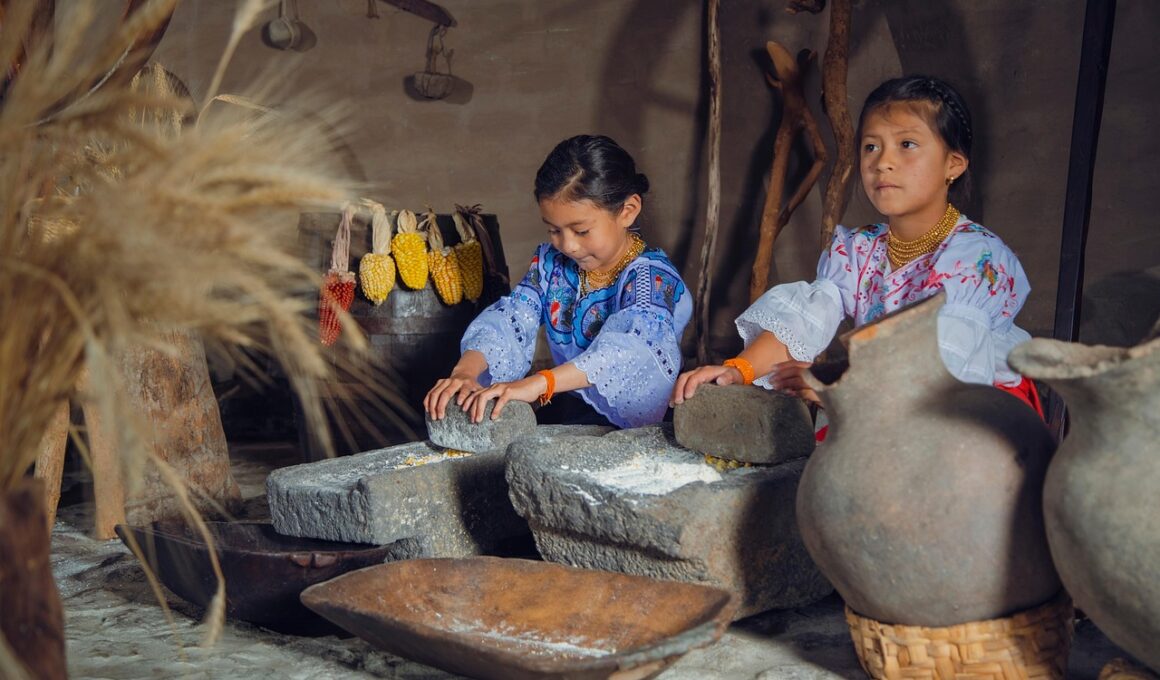The Cultural Significance of Skydiving in Different Countries
Skydiving has transcended from mere recreation to a cultural phenomenon in various countries, each adding its unique flavor. In places like New Zealand, it embodies the spirit of adventure, aligning with their ethos of embracing the outdoors. The breathtaking views of the landscape while free-falling provide more than thrills; they symbolize freedom and living life to the fullest. In contrast, skydiving in the United States often emphasizes an element of community, with multiple events organized around the sport that fosters camaraderie among enthusiasts. Countries like Canada integrate skydiving into their tourism industry, promoting it as a once-in-a-lifetime experience for visitors. The sport also serves as a rite of passage in some cultures, where individuals view the jump as a testament to personal growth and bravery. South Africa offers unique scenic views that elevate the skydiving experience, making it appealing to tourists. Each nation offers a blend of thrill, tradition, and beauty, showcasing how skydiving connects people with their environments and each other at deeper levels. Understanding these cultural dimensions enriches our appreciation of skydiving.
Skydiving Festivals and Cultural Identity
Skydiving festivals play a significant role in shaping cultural identity, showcasing different traditions and practices linked to the sport. Events such as the annual Red Bull Skydive in Switzerland attract global attention, where athletes from various backgrounds unite in celebration of their shared passion. These festivals often feature a blend of sports, music, and local cuisine, highlighting a nation’s cultural richness. In another instance, the Skydive Dubai event is not just a competitive spectacle; it also serves as a window into Emirati culture, marrying tradition with modernity. Festivals frequently promote skill-sharing among skydivers, which fosters respect and collaboration across cultures. Furthermore, specific rituals and initiatives are introduced that honor local heritage during these gatherings. Countries like Australia and Brazil incorporate regional themes into their skydiving events, enhancing their identity on a global stage. Consequently, these gatherings provide an avenue for cultural exchange, enabling enthusiasts to learn from one another while reveling in exhilarating descents. Such interactions contribute significantly to a deeper understanding of diverse cultural landscapes intertwined with the joy and thrill of skydiving.
In many regions, the local perception of skydiving intertwines with historical narratives and societal values. For instance, in the United Kingdom, skydiving has roots in military traditions. Military parachuting established the activity, and it has evolved into a popular recreational sport. The cultural significance of skydiving here lies in a sense of heritage, as many enthusiasts are inspired by historical events. Similarly, countries with a military background often see a strong connection between skydiving and national pride. For example, in Israel, skydiving showcases resilience, reflecting the nation’s story of adversity and triumph. Community events often arise around this theme, fostering togetherness and collective spirit. However, not all countries view skydiving solely through a military lens, as nations with less military history embrace the sport as a modern lifestyle choice and a means to explore new frontiers. In countries like Japan, the thrill is often juxtaposed with spiritual beliefs, where the act of flying can also symbolize enlightenment. The way societies interpret and practice skydiving reflects broader narratives, continuing to evolve with each generation that embraces the sport.
Technological Influence on Cultural Perception
Technology’s evolution significantly influences how skydiving is perceived and experienced across cultures. As safety measures and equipment have advanced, more people are encouraged to try this adrenaline-pumping sport. Innovations such as wingsuits and advanced parachute systems not only enhance the thrill but also attract diverse demographics. In countries like the United States and Australia, the accessibility of these advancements allows a wider range of participants, broadening the sport’s cultural impact. Social media has transformed the way skydiving is shared and appreciated. Stunning aerial videos and photos shot during jumps have led to the rise of skydiving influencers, spreading awareness and enticing others to join the community. Platforms like Instagram become venues for showcasing personal experiences, prompting cultural dialogues around adventure and exploration. Remote locations that were once challenging to access are now being featured prominently, enticing global adventurers to experience them firsthand. Moreover, documentaries on extreme sports elevate skydiving’s visibility, often focusing on personal stories intertwined with skills development, thus enriching the cultural narrative surrounding the sport. Such technological advancements dramatically shift perceptions, revealing skydiving as an ever-evolving cultural icon.
The therapeutic aspects of skydiving also contribute to its cultural significance. Many enthusiasts view the experience as transformative, facilitating personal breakthroughs and enhancing mental well-being. In diverse cultures, this aspect resonates differently, with some relating skydiving to spiritual journeys. Countries like Bhutan, known for their emphasis on happiness, increasingly adopt adventure sports like skydiving as therapeutic tools. This newfound approach encapsulates a blend of adventure with mindfulness. Regionally, initiatives arise where skydiving is used to support mental health programs, consciously bridging the gap between recreation and healing. In places like Brazil, skydiving training camps incorporate motivational workshops, encouraging participants to break through barriers. This unique combination attracts a demographic seeking personal development alongside adrenaline. The representation of skydiving as a means of overcoming challenges and improving life quality fosters positive narratives. Several cultures celebrate skydiving clubs that focus on community support and empowerment. By recognizing the therapeutic benefits associated with skydiving, the sport not only offers thrill-seekers an escape but also enhances collective experiences rooted in care and transformation across societies.
Challenges and Cultural Adaptations
Despite its thrilling reputation, skydiving faces various challenges that shape cultural adaptations. In several regions, regulatory frameworks surrounding the sport can stifle its growth. Countries with stringent regulations often encounter fewer participants, restricting the sport’s cultural significance. Conversely, nations with more lenient regulations see a burgeoning interest, but at the risk of safety concerns. Cultural attitudes towards risk also play a role; in cultures where security is paramount, skydiving may be seen as an unnecessary danger. This perception can limit participation and impact how the sport is valued socially. However, committed communities work diligently to advocate for safety reforms while promoting skydiving’s benefits. In some cultures, industry professionals partner with educational institutions to foster awareness and understanding, dispelling myths surrounding the sport. Tailored workshops designed to educate both enthusiasts and local populations exemplify these efforts. Through collective action, diverse communities navigate the complexities of culture and recreation. Furthermore, social campaigns that emphasize safety protocols contribute to gradually changing perceptions, fostering greater acceptance of the sport while maintaining cultural integrity. The evolution of skydiving continues, reflecting a blend of passion, safety, and cultural respect.
The future of skydiving is bright with growing influences from global perspectives, encouraging cultural exchange that fosters understanding. Emerging trends signal a shift toward inclusivity in the sport, as organizations and clubs increasingly attract diverse participants. Countries are learning from one another, sharing best practices through successful programs aimed at integrating underrepresented groups. For example, female skydivers are rapidly increasing globally, elevating discussions around gender equality in adventure sports. In nations like Sweden and Iceland, significant strides push for more female representation, inspiring women to take the leap. Similar movements are evident in regions with cultural restrictions, where organizations work tirelessly to promote skydiving while respecting local customs. Moreover, innovative training platforms utilizing virtual reality open doors for newcomers, allowing individuals to experience the sport in safer climates. As communities embrace new technologies and ideas, the cultural significance of skydiving evolves, expressing the shared human desire for adventure. In turn, positive representations proliferate, inspiring generations to take to the skies while building stronger, more inclusive communities around skydiving. We anticipate an exciting future for all who embrace the sheer exhilaration of freefall.
In conclusion, skydiving encompasses more than just a momentary thrill; it reflects intricate cultural narratives worldwide. From societal values and historical context to community identity and inclusiveness, different countries integrate skydiving into their unique cultures. The sport encourages individuals to challenge their limits, instilling confidence and fostering growth. Furthermore, as cultural perceptions evolve, so too does the nature of the sport. Continuous advocacy for safety, inclusivity, and community support helps shape the trajectory of skydiving as a respected cultural practice. Innovations in technology and training introduce exciting possibilities, further enriching the cultural fabric intertwined with skydiving. Each jump becomes a leap into shared experiences, fostering connections between people of diverse backgrounds. Skydiving unites individuals through shared passions while celebrating unique cultural perspectives. The cultural significance is profound; it transcends the thrill of freefall, becoming a symbol of freedom, unity, and adventure. As skydiving continues to inspire individuals around the world, it remains vital to honor and understand the diverse cultural contexts that contribute to this exhilarating experience.


